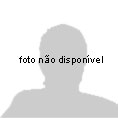XINFORMAÇÕES SOBRE DIREITOS AUTORAIS
As obras disponibilizadas nesta Biblioteca Digital foram publicadas sob expressa autorização dos respectivos autores, em conformidade com a Lei 9610/98.
A consulta aos textos, permitida por seus respectivos autores, é livre, bem como a impressão de trechos ou de um exemplar completo exclusivamente para uso próprio. Não são permitidas a impressão e a reprodução de obras completas com qualquer outra finalidade que não o uso próprio de quem imprime.
A reprodução de pequenos trechos, na forma de citações em trabalhos de terceiros que não o próprio autor do texto consultado,é permitida, na medida justificada para a compreeensão da citação e mediante a informação, junto à citação, do nome do autor do texto original, bem como da fonte da pesquisa.
A violação de direitos autorais é passível de sanções civis e penais.
As obras disponibilizadas nesta Biblioteca Digital foram publicadas sob expressa autorização dos respectivos autores, em conformidade com a Lei 9610/98.
A consulta aos textos, permitida por seus respectivos autores, é livre, bem como a impressão de trechos ou de um exemplar completo exclusivamente para uso próprio. Não são permitidas a impressão e a reprodução de obras completas com qualquer outra finalidade que não o uso próprio de quem imprime.
A reprodução de pequenos trechos, na forma de citações em trabalhos de terceiros que não o próprio autor do texto consultado,é permitida, na medida justificada para a compreeensão da citação e mediante a informação, junto à citação, do nome do autor do texto original, bem como da fonte da pesquisa.
A violação de direitos autorais é passível de sanções civis e penais.
Coleção Digital
Título: SOLAR LIGHT-SENSITIVE HETEROSTRUCTURED NANOMATERIALS: ENHANCING PHOTOCATALYTIC HYDROGEN PRODUCTION AND PROBING ROS GENERATION FOR ENVIRONMENTAL REMEDIATION Autor: EMANUEL DO COUTO PESSANHA
Instituição: PONTIFÍCIA UNIVERSIDADE CATÓLICA DO RIO DE JANEIRO - PUC-RIO
Colaborador(es):
BOJAN MARINKOVIC - ADVISOR
JORDI LLORCA PIQUE - CO-ADVISOR
Nº do Conteudo: 67824
Catalogação: 03/09/2024 Liberação: 28/06/2025 Idioma(s): ENGLISH - UNITED STATES
Tipo: TEXT Subtipo: THESIS
Natureza: SCHOLARLY PUBLICATION
Nota: Todos os dados constantes dos documentos são de inteira responsabilidade de seus autores. Os dados utilizados nas descrições dos documentos estão em conformidade com os sistemas da administração da PUC-Rio.
Referência [pt]: https://www.maxwell.vrac.puc-rio.br/colecao.php?strSecao=resultado&nrSeq=67824&idi=1
Referência [en]: https://www.maxwell.vrac.puc-rio.br/colecao.php?strSecao=resultado&nrSeq=67824&idi=2
Referência DOI: https://doi.org/10.17771/PUCRio.acad.67824
Resumo:
Título: SOLAR LIGHT-SENSITIVE HETEROSTRUCTURED NANOMATERIALS: ENHANCING PHOTOCATALYTIC HYDROGEN PRODUCTION AND PROBING ROS GENERATION FOR ENVIRONMENTAL REMEDIATION Autor: EMANUEL DO COUTO PESSANHA
JORDI LLORCA PIQUE - CO-ADVISOR
Nº do Conteudo: 67824
Catalogação: 03/09/2024 Liberação: 28/06/2025 Idioma(s): ENGLISH - UNITED STATES
Tipo: TEXT Subtipo: THESIS
Natureza: SCHOLARLY PUBLICATION
Nota: Todos os dados constantes dos documentos são de inteira responsabilidade de seus autores. Os dados utilizados nas descrições dos documentos estão em conformidade com os sistemas da administração da PUC-Rio.
Referência [pt]: https://www.maxwell.vrac.puc-rio.br/colecao.php?strSecao=resultado&nrSeq=67824&idi=1
Referência [en]: https://www.maxwell.vrac.puc-rio.br/colecao.php?strSecao=resultado&nrSeq=67824&idi=2
Referência DOI: https://doi.org/10.17771/PUCRio.acad.67824
Resumo:
Solar light-responsive heterostructures hold great potential in different
applications toward a clean and sustainable future, such as hydrogen (H2)
photoproduction and environmental remediation. In the context of photocatalysis,
titanium dioxide (TiO2) plays a crucial role due to its wide range of applications,
excellent chemical stability, low toxicity, and relatively low cost. However, neat
TiO2 has some shortfalls, such as a high recombination rate and low sensitivity to
solar light, which limits its efficiency in photocatalytic applications in general.
Therefore, the continuous development of new materials aimed at improving these
limitations is mandatory. Among the approaches to overcome the neat TiO2
shortfalls is the formation of heterojunctions with suitable semiconductors,
improving charge separation and, therefore, photocatalytic efficiency. Nickel
oxides and copper oxides are reported as promising alternatives for forming
heterojunctions with TiO2, enhancing the charge transfer and broadening the light
absorption in the visible spectrum. This thesis presents different studies aimed at
the synthesis and characterization of new efficient heterostructured nanomaterials
for photocatalytic hydrogen generation and hazardous pollutants abatement. In the
first study, a NiO/TiO2 p-n heterojunction obtained via mechanochemistry was
reported, which exhibited an improved solar-driven H2 photoproduction rate
compared to neat TiO2 (8.85 mmol h-1g-1vs. 0.73 mmol h-1g-1). In all cases, the
addition of NiO supported on TiO2 reduced the recombination rate and enhanced
the visible light absorption. TEM, XPS, and XAS studies demonstrated that a
homogenous dispersion and a favorable spin configuration of NiO clusters
supported on TiO2 were responsible for the superior efficiency exhibited by the
sample prepared via mechanochemistry, labeled as NiO/P90-BM. Noticeably,
cycling, long-term, and aging tests have shown that the reported photocatalyst is
efficient after several cycles, prolonged use, and after long periods of storage.
Furthermore, studies combining EPR and the spin trapping technique were carried
out to delve into the production of superoxide and hydroxyl
by NiO/TiO2 heterojunctions. These studies provided insights into the potential
application of the NiO/TiO2 heterojunctions for the photocatalytic degradation of
gaseous and aqueous pollutants. The EPR results shed light on the NiO/P90-BM
sample as the most efficient in ROS photogeneration, revealing that
mechanochemical synthesis resulted in a more efficient architecture for generating
superoxide and hydroxyl
radicals. Besides, a simple soft chemistry route was reported to
prepare a heterostructure of cuprous oxide nanocubes (Cu2O NCs) and TiO2,
labeled as Cu2O NCs/TiO2, as an efficient adsorbent for tetracycline (TC), which is
a broad-spectrum antibiotic. FTIR and TGA were carried out before and after the
adsorption process to demonstrate the adsorption of TC by the Cu2O NCs/TiO2
heterostructure. Additionally, tests with visible light irradiation were performed to
distinguish between adsorption and photocatalytic removal processes. In addition,
EPR measurements were also carried out using spin trapping to investigate the ROS
photoproduction. Interestingly, there was no detectable ROS photoproduction by
the Cu2O NCs/TiO2 heterostructure, demonstrating that TC removal is solely due
to adsorption. These results contribute to clarifying a discrepancy in the literature
regarding the photocatalytic activity of Cu2O NCs under visible light. Collectively,
this research has advanced the understanding of photocatalytic mechanisms and
reported new heterostructured nanomaterials, while highlighting their potential for
sustainable applications in diverse environmental and energy transition related
contexts.
| Descrição | Arquivo |
| COMPLETE |






